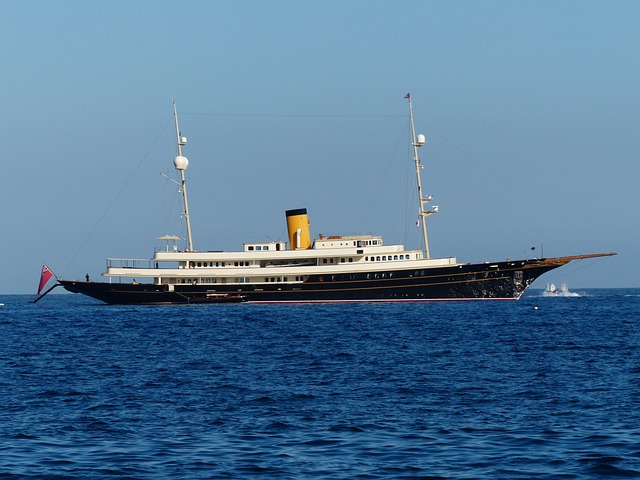When installing a marine battery, it's essential to first assess compatibility with your vessel's electrical system and adhere to manufacturer specifications. Proper placement in a well-ventilated area, away from conductive surfaces, is crucial for safety and performance. Ensure all connections are clean, secure, and use appropriate gauge cables to minimize voltage drop. A load test post-installation verifies the battery's functionality. Regular maintenance, including cleaning terminals, checking water levels in lead-acid batteries, and proper charging with a charger designed for marine batteries, is vital for longevity and optimal operation. Always address any post-installation issues like low charge or poor connection promptly. By following these steps, you'll ensure your marine battery delivers consistent and reliable power for all your nautical adventures.
Navigating common issues with marine battery installation can transform a frustrating experience into a seamless upgrade for your watercraft. This article delves into the essential steps and considerations for ensuring your marine battery is not only correctly installed but also performs optimally over time. From assessing compatibility to maintaining performance, we cover the gamut of marine battery care. Learn how to select the right type for your needs, securely mount it, establish proper connections, and conduct vital post-installation procedures. With practical guidance on troubleshooting common issues and routine maintenance checks, your marine battery will reliably power your adventures on the water.
- Assessing Marine Battery Compatibility and Correct Installation
- Understanding Marine Battery Types and Their Specific Requirements
- Step-by-Step Guide to Safely Mounting Your Marine Battery
- The Importance of Proper Connections: Terminal Cleaning and Securing
- Calibrating and Charging Your New Marine Battery Post-Installation
- Troubleshooting Common Issues After Marine Battery Installation
- Maintaining Optimal Performance with Regular Maintenance Checks
Assessing Marine Battery Compatibility and Correct Installation

When addressing common battery installation problems, particularly in marine applications, it’s crucial to start with compatibility assessment. Marine batteries are designed for the demanding conditions encountered at sea, and they differ from standard automotive or deep-cycle batteries in terms of chemistry, construction, and performance. Before installation, ensure that the selected battery model is compatible with your vessel’s electrical system and manufacturer specifications. Pay close attention to factors such as battery size, voltage rating, and cold cranking amps (CCA) to match the battery’s capabilities with the boat’s power requirements.
Proper installation is the next critical step in ensuring your marine battery operates safely and efficiently. Begin by securing the battery in a well-ventilated, non-conductive compartment to prevent overheating and potential hazards. Ensure that all connections are clean, tight, and corrosion-free. Use the correct gauge of cable to minimize voltage drop; the marine battery cables should be appropriately sized for the length and thickness of the wires. Connect the battery terminals to the corresponding posts, positive to positive, negative to negative, and use a battery holder or strap to secure it in place. After installation, conduct a load test to confirm that the battery holds charge as expected and that there are no electrical continuities or shorts between the terminals. Regular maintenance checks will help you identify any issues early, such as corrosion build-up or loose connections, which can affect battery performance and longevity. Always refer to your boat’s manual and the marine battery manufacturer’s guidelines for specific installation instructions and safety precautions.
Understanding Marine Battery Types and Their Specific Requirements

When addressing common battery installation problems in a marine context, it’s crucial to first understand the different types of marine batteries available and their specific requirements. Marine batteries are designed to withstand the harsh conditions found on boats, including temperature fluctuations, vibrations, and humidity. There are primarily two main types of marine batteries: starter batteries and deep-cycle batteries. Starter batteries, similar to their automotive counterparts, provide large bursts of energy for cranking engines but are not designed for repeated deep discharge cycles. In contrast, deep-cycle batteries are engineered to be regularly deeply discharged and recharged, making them ideal for applications like trolling, house banking, or as the starting battery on smaller boats where space is limited.
Choosing the right marine battery type begins with identifying the battery’s intended use. For example, a cranking (starting) battery will have different dimensions, cold-cranking amps (CCA), and reserve capacity (RC) specifications compared to a deep-cycle battery used for trolling or as a house battery. Additionally, deep-cycle batteries come in various configurations, including flooded lead-acid (FLA), AGM (Absorbent Glass Mat), and lithium-ion. Each has its advantages and is suited for different applications. FLA batteries are often more cost-effective but require careful maintenance to prevent spills. AGM batteries offer spill-proof construction, making them suitable for a variety of installations. Lithium-ion batteries are lighter and have a longer lifecycle but come at a higher initial cost. Understanding these differences is key to ensuring that the installed battery will perform reliably and efficiently, which is vital for safety and comfort on board. Proper installation also includes secure mounting to prevent movement, correct connections to avoid short circuits, and proper charging with appropriate charge controllers or alternators to ensure the longevity and optimal performance of the marine battery system.
Step-by-Step Guide to Safely Mounting Your Marine Battery

The Importance of Proper Connections: Terminal Cleaning and Securing

When installing a marine battery, ensuring proper connections is paramount for both the safety and efficiency of your vessel’s electrical system. A common issue that can arise from improper connections is poor current flow, leading to a loss of power and reduced performance of onboard electronics. To prevent this, it’s crucial to clean and secure the terminals properly. Over time, corrosion can build up on battery terminals, causing weak connections or even complete disconnections. A thorough cleaning with a solution of baking soda and water, or a specialized terminal cleaner, will remove this corrosion and ensure a solid connection. After cleaning, apply a dielectric grease to protect the terminals from future corrosion and to ensure a good electrical contact. Securing the connections is equally important; loose terminals can cause arcing, which not only reduces efficiency but can also create sparks that pose a fire risk. Use the appropriate terminal clamps or washers to hold the cables securely in place, ensuring that all nuts and bolts are tightened to the manufacturer’s specifications. By taking these steps, you can safeguard against common battery installation problems, particularly those pertinent to marine batteries, which are often subjected to harsh environmental conditions that can exacerbate connection issues. Properly maintained marine battery connections are essential for a reliable and uninterrupted power supply during your voyages.
Calibrating and Charging Your New Marine Battery Post-Installation

When installing a new marine battery, calibration and proper charging are crucial steps to ensure optimal performance and longevity. Post-installation, it’s essential to calibrate your marine battery by following the manufacturer’s instructions. This process helps in accurately recording the battery’s capacity, which is vital for precise state-of-charge readings. Typically, this involves charging the battery to its full capacity and then discharging it to a specific level, after which the battery is recharged again to full capacity. This cycle allows the battery’s built-in charge meter to adjust to the new condition of the battery.
Charging your new marine battery correctly is also a vital aspect of maintenance. Marine batteries require a charger designed specifically for deep-cycle applications, as opposed to standard automotive chargers. The charging system should be set to match the battery type and capacity. For instance, lead-acid marine batteries often require a different charge profile than AGM or lithium ion types. It’s important to adhere to the recommended charging rates to avoid overcharging, which can shorten the battery’s lifespan and reduce its efficiency. Additionally, always use the correct type of battery cables and connectors to prevent any potential loss of power or damage to the battery terminals. Proper ventilation should be ensured during the initial charging process to dissipate any hydrogen gas produced by the battery, which is particularly important in a confined marine environment. By diligently following these steps, you can ensure your marine battery operates at peak performance and remains reliable for all your maritime adventures.
Troubleshooting Common Issues After Marine Battery Installation

When installing a new marine battery, encountering issues is not uncommon. To ensure your vessel’s electrical systems operate smoothly with your freshly installed marine battery, it’s crucial to address any problems promptly and effectively. One frequent challenge post-installation is the failure of the battery to hold a charge. This can be due to various reasons such as incorrect connections, which may lead to poor battery performance or even damage over time. Always verify that all terminals are securely attached and free from corrosion. Additionally, ensure that the battery’s charge level is properly set on any accompanying charger, as this can significantly impact its efficiency.
Another common issue is the presence of a battery with a low voltage soon after installation, which might suggest that the alternator isn’t charging the battery adequately. To troubleshoot this, inspect the alternator belt for proper tension and check the alternator’s output voltage with a multimeter. If everything appears correct, consider the possibility of a bad battery or an issue with the battery cables or connections. In some cases, the battery may be too large for its compartment, causing it to sit improperly and potentially disrupting its connection with the charging system. It’s also wise to check the battery’s charge rate to ensure it’s compatible with your vessel’s charging system. By methodically going through these steps, you can effectively troubleshoot and resolve common issues following marine battery installation, ensuring your boat’s electrical systems remain reliable and efficient.
Maintaining Optimal Performance with Regular Maintenance Checks

When it comes to maintaining optimal performance from your marine battery, regular maintenance checks are indispensable. These checks can help prevent common issues that arise from prolonged use in marine environments, which often involve varying temperatures and humidity levels. To begin with, regularly inspect the battery terminals for any signs of corrosion or loose connections, as these can significantly impair the battery’s ability to hold a charge. Use a wire brush to clean the terminals if you notice corrosion, and ensure that all connections are tight but not overly tightened, which could damage the terminals.
Additionally, monitor the water level in flooded lead-acid marine batteries, as maintaining the proper electrolyte balance is crucial for their longevity and performance. Distilled or deionized water should be used to bring the levels back up if they’re low, as this will replace any water lost through natural gassing during the charging process. Keeping the battery charged appropriately is also vital; undercharging can lead to sulfation, while overcharging can cause excessive gassing and shorten the battery’s lifespan. Employ a reliable battery charger with a charge management system designed for marine batteries to ensure they receive the correct level of charge for their type and condition. Regular maintenance, including these checks and adjustments, not only extends the life of your marine battery but also ensures that it delivers the best possible performance each time you set sail.
In conclusion, addressing common battery installation problems in marine applications is both an art and a science. By carefully assessing your vessel’s compatibility with a new marine battery, understanding the unique requirements of different battery types, and adhering to a detailed guide for secure mounting, you can prevent many potential issues from arising. Proper connections, achieved through terminal cleaning and securing, are critical for safe operation. Additionally, following the installation with correct calibration and charging procedures is essential for long-term performance and reliability. Should you encounter any troubles post-installation, the included troubleshooting guide provides clear solutions. Regular maintenance checks will ensure your marine battery remains in peak condition, safeguarding your journeys on the water. With these practices in mind, you can navigate the seas with confidence, knowing that your marine battery system is operating at its best.
